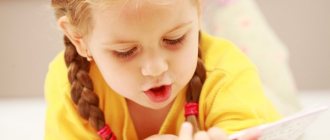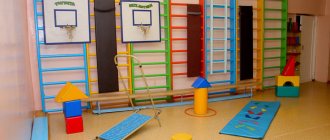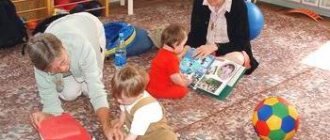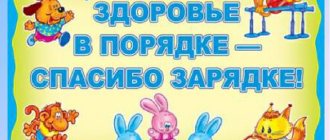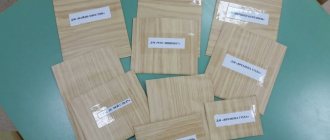Assignments for first-graders in mathematics:
Mathematical tasks can be not only educational, but also bright and varied. These math exercises will help your children master the basic math skills needed for 1st grade. They are presented in a playful way, which promotes exciting learning for first-graders. In this non-boring form of learning, children will learn simple mathematical operations and understand that mathematics can be very interesting.
trace and color the pictures
Give your first grader a task: create a dotted line drawing and then color it. The complex also offers templates for writing out various figures.
find 2 identical pictures
The task “Find two identical pictures” is a way to develop attention and perseverance. The essence of the exercise is that among 6-8 very similar pictures, the child should identify two that are absolutely identical. It is worth explaining to the child how to perform the test: sequentially compare each picture, notice small details and identify two that are identical in all respects.
solve the examples and put the signs: >, <, =
In this section you will find a dozen useful examples with colorful illustrations and coloring pages that will help first-graders master equation solving skills.
come up with a problem statement and solve it: addition
Writing simple math problems helps first-graders develop language and abstract thinking. With the help of a teacher or parents, the child learns to identify such components of a task as the condition, the question posed, the solution and the preparation of an answer to it.
come up with a problem statement and solve it: subtraction
It is convenient to compose the skills of composing subtraction problems using ready-made cards with answers for control. It is easy for a child to understand the essence of the picture and solve the problem.
repeat the drawing dot by dot
Fine motor skills of still clumsy children's fingers need constant training. In addition, motor skills largely influence the development of the brain, especially the center responsible for speech and thinking. Suitable exercises for developing these skills are copying a drawing according to the proposed template.
connect the figures
Tasks on creating figures according to a given algorithm are intended to develop figurative and logical thinking in a child. At first, offer the first grader simpler options, gradually complicating the task.
solve a logical thinking problem
These are simple logic problems, the solution of which involves drawing arrows. For example, using arrows you need to connect interconnected objects (an animal and its house, an example and an answer to it), restore the order of numbers, or divide objects into groups.
Draw arrows from 1 to 10.
Match the example with the correct answer.
Development of logic and thinking
Logical thinking is very useful for a child from the very first days of school. Logic helps to solve various problems, including mathematical ones. Having this knowledge, the child will feel much more confident in life, learn to think, look for patterns, and draw conclusions. It is advisable to start with the simplest exercises, gradually complicating them.
Analogies
The purpose of this task is to teach the child to establish a logical connection between words, train flexibility of thinking and draw analogies. To do this, you need to divide a sheet of paper into two columns, and write a few words in each column. Then you need to invite the child to study the words in the right column and establish a logical connection between them.
When the child understands what the words in the right column have in common, he should be asked to study the words located in the left column and choose from them those words that match the words from the right column.
The main thing is that the child can explain why he chose this particular word and what unites all the words he chose.
For example, in the left column the words are given: currant, berry, pan. The words in the right column are: stove, soup, spoon, dishes, cook. The word “saucepan” fits the words from the right column, since this is a dish, it sits on the stove, in which the cook cooks soup and stirs it with a spoon.
Eliminating unnecessary things
The purpose of this task is to teach the child to generalize and classify various concepts. The child must be offered a list of words (at least 4), of which one word does not fit in meaning with the others. The kid must find the extra word and explain why he chose it. The child needs to complete about 10 tasks at a time.
For example, the words are given: shoes, boots, boots, sandals, felt boots, laces. In this series, the word “laces” is superfluous, because these are not shoes.
Speed of thinking
This task teaches the child to see the whole picture as a whole, to put together a complete image from details. The purpose of this exercise is to train your thinking speed.
The child needs to be shown words whose letters are missing. In place of the missing letter there is a dash; the number of dashes is equal to the number of missing letters. In three minutes, the child needs to form as many words (singular nouns) as possible.
It’s not scary if the baby doesn’t understand what word can be formed from the remaining letters. You can skip this word and move on; the main thing here is not only correctness, but also speed.
For example, on paper it may be written: g-ra, z-m-k, r-ba, o-n-. The child must name the words as quickly as possible: mountain, castle, fish, window.
Decoding anagrams
Anagrams are words whose letters are rearranged in random order. The child must identify the encrypted word. This task helps the child see the whole picture from the details.
For example, a child is shown a card on which it is written: chnetie, slot, aogvolmolko. The child must guess as quickly as possible that these are the words reading, table, puzzle.
Writing assignments 1st grade:
Writing assignments are very important for elementary school students. With the help of printed simulators, students learn letters, acquire writing and literacy skills. And thanks to beautifully designed assignments, learning is fun and interesting.
tick sticks: templates for children 6 7 years old
The proposed copybooks with different sticks, hooks and other elements of letters and numbers will help first-graders acquire calligraphic writing skills, and then develop beautiful and legible handwriting. And additional coloring drawings and tracings will make this process more fun.
read divide the words into syllables
One of the basic skills of a first grader is the ability to correctly divide words into syllables. To begin, offer your child cards with the rules for dividing words into syllables, and then consolidate the acquired knowledge using a simulator with tasks.
learning to hatch: templates for children 6 7 years old
To prepare your hand for writing, learn to think logically and analyze, offer your child the following patterns for shading.
Olga Naumova “Learning to compare”
Preschool children often have difficulty making comparisons. The ability to compare is one of the most important mental operations, which is based on developed speech, logic and observation. Therefore, it is extremely important from early childhood to stimulate the development of logical thinking, attention, and observation in children. Along with these skills, the child’s speech develops and his vocabulary is enriched.
Download the book by O. Naumov “Learning to Compare”
Learning to write letters print:
templates for children 6 7 years old
The best way to start learning penmanship is with the help of special simulators. Using examples, the child learns to write letters, his first syllables and short words.
The task is to circle the numbers:
templates for children 6 7 years old
Copybooks and coloring pages will help future schoolchildren quickly master the skills of writing numbers.
The task is to count to 10
Simple exercises will help you strengthen your ability to count up to 10.
Count and write down
Once first graders have learned their numbers, it's time to begin mastering skills like addition and subtraction. Bright cards with beautiful designs are perfect for this.
TOP 15 fun New Year's quiz questions
To make a quiz fun, you need to fill it with fun and funny questions along the way. As a result, participants will be able to expand their knowledge and have fun.
- What kind of magic wand does Santa Claus wear? (Staff)
- Instead of a Christmas tree in southern countries they decorate... (palm tree)
- What are white winter flies called? (Snowflakes)
- Where in the kitchen could Santa Claus live? (Freezer)
- Which winter month has 28 days? (In any)
- Without this fruit, New Year's nutrition is impossible. What fruit is this? (Mandarin)
- If you don't believe in ecological features, according to the fairy tale these flowers can be found even at night. Which? (Snowdrops)
- What will happen on February 31, 2022? (Nothing, there is no such day)
- In the spring it cries, in the winter it grows stronger. What has this ability? (Icicle)
- When is New Year celebrated for the second time? (From January 13 to 14)
- The winteriest ocean is... (Arctic)
- What sweet product does best in winter? (Ice cream)
- What animals does Santa Claus usually surround himself with when moving around the country? (Deer)
- A folk work with a winter name is... (Morozko)
- What New Year's entertainment are pets most afraid of? (Firework)
Coloring pages for children with tasks
Shade each segment of the drawing in accordance with the indicated numbers, and then color it.
Color the picture by numbers.
Solve the examples and color the picture according to the meanings of the numbers.
Consider what color each letter represents and color the picture. Guess which character is hidden on it.
Draw an outline and color the picture.
Literary quiz for the preparatory group of preschool educational institutions
Experts in the preparatory group will easily cope with the prepared questions, and the quiz is an interesting format of tasks to arouse in students a love of literature. The main rule is to answer correctly. For fun, you can combine players into teams.
- Who was the main resident of Flower City? (Dunno)
- In what village did Matroskin, Pechkin, Uncle Fyodor and others live? (Prostokvashino)
- Who was constantly threatened with reprisal by the wolf from “Well, wait a minute!”? (To the hare)
- What fabulous musicians travel with their music? (Bremen)
- According to the famous song, what is brought by helicopter for a birthday? (500 popsicles)
- Which fairy-tale character had an onion instead of a head? (Cipollino)
- What night was it in the fairy tale about Aladdin? (Arabic)
- Who did the dishes run away from? (From Fedora)
- What was the nickname of the snake with which the heroes fought? (Gorynych)
- Where was Koshchei's death hidden? (In the egg)
- Which cat visited Lukomorye? (Scientist)
- What did Cinderella's carriage turn into? (Into the pumpkin)
- Who was always sad in the fairy tale about Pinocchio? (Pierrot)
- Why did Pinocchio's nose grow? (From lies)
- What was the name of Buratino's father? (Papa Carlo)
